Lulu Home 2-Pack Ultrasonic Animal Repeller, Solar Powered, Motion-Activated, Weatherproof
$49.99 Original price was: $49.99.$44.99Current price is: $44.99.
Keep wildlife moving along without traps or toxins. The Lulu Home 2 Packs Ultrasonic Animal Repeller uses a PIR motion sensor to trigger adjustable ultrasonic sound and bright strobe flashes that gently push away cats, dogs, squirrels, raccoons, rabbits, and foxes. Each unit is solar powered with USB top-up, weather resistant, and offers five easy modes so you can tune it for your yard and your neighbors. It is a humane, set-and-forget way to protect beds, bins, and paths.
Description
If you are tired of surprise visitors digging beds, nibbling seedlings, or leaving a mess on the lawn, the Lulu Home 2-Pack Ultrasonic Animal Repeller, Solar Powered, Motion-Activated, Weatherproof gives you a humane, set-and-forget way to push wildlife back to the edges of your property. The units use a built-in solar panel, a PIR motion sensor, adjustable sonic outputs, and strobing lights to startle animals so they choose an easier path somewhere else.
I like this kit for busy homeowners and gardeners because it ticks the practical boxes. It charges outdoors using sunlight, can also accept a low-voltage adapter if needed, and it is designed for year-round outdoor use. In simple terms, when movement enters the detection zone the device fires a quick cocktail of ultrasound, optional alarm, and bright flashes that discourages dogs, cats, squirrels, raccoons, rabbits, foxes, and similar intruders without harming them. That is the entire promise: fewer intrusions with a clean conscience.
Key Customer Benefits
- Humane, child and pet conscious deterrence. The Lulu Home units use sound bursts and bright flashes triggered by motion to startle animals into choosing a different path, with no traps or toxins. That aligns with how reputable wildlife groups position ultrasonic cat deterrents for gardens, which focus on startling rather than harming.
- Real-world relief for common yard intruders. Modes span lower and higher ultrasonic bands with an optional alarm, so you can target the species that actually bother you, such as cats, raccoons, rabbits, squirrels and foxes. The Lulu Home listing outlines five selectable modes by frequency range to help you tune the response.
- Solar powered convenience with plug-in backup. Integrated solar charging keeps the units working outdoors. If you face several cloudy days, you can top up by USB or a low-voltage adapter according to similar device manuals, so you are not stuck waiting for sunshine.
- Motion activated to save power and reduce noise exposure. A PIR sensor wakes the repeller only when something moves through the zone. Typical devices in this class detect within about a 110 degree arc and roughly 26 to 30 feet, which is enough for small garden paths and bed edges when you angle the heads toward likely entry points.
- Weather resistant for year-round placement. The product documentation cites an IP44 weatherproof design. That level is common for garden gadgets and is suitable for rain and light spray, which means you can leave the units outside while avoiding submersion.
- Two pack coverage that builds a perimeter. With one unit aimed along a fence line and the second covering a gap or bed, you create overlapping detection that cuts down on blind spots. Academic field trials on garden cat incursions found that ultrasonic deterrents can reduce visits and the time animals spend in protected areas when devices are placed correctly, which supports a perimeter approach.
- Straightforward setup and adjustment. Sensitivity and frequency knobs let you dial in range and sound without tools. The Lulu Home manual and listings highlight these controls and recommend periodic adjustments, which helps prevent animals from getting used to a single pattern.
Product Description
What this product is
The Lulu Home 2 Packs Ultrasonic Animal Repeller is a pair of solar-powered, weather-resistant yard guardians that listen for movement and answer with sound and light. Each unit has a built-in PIR motion sensor, a speaker that emits adjustable ultrasonic frequencies, and bright strobing LEDs.
You get five selectable modes, including three frequency bands, a strobe-only alarm mode, and a combined mode that pairs sound with light. The listing details the ranges for each band, for example about 13.5 to 19.5 kilohertz in Mode 1 and about 24.5 to 45.5 kilohertz in Mode 3, plus a plug-in charging option if the sun has been shy.
How it works
When an animal steps into the detection zone, the PIR sensor wakes the unit. The speaker then emits a burst of sound at the mode you selected. Some modes include an audible alarm that people can hear, while others use higher frequencies that most humans will not notice. If you want extra punch, you can add the flashing LEDs.
The goal is startle and avoidance, not harm. The manufacturer explains that the devices are designed to drive animals away without injuring them, and that sensitivity and frequency knobs let you dial in the behavior you want.
Why this approach can be effective
Independent research on garden cat deterrents shows ultrasonic devices can reduce both how often cats enter and how long they stay, which tracks with what many homeowners report when these units are aimed correctly at paths or hotspots. A two-phase study reported moderate but real reductions in cat intrusions, while a more recent suburban trial found about a forty six percent drop in visits and a large reduction in loitering time during active periods. These studies were not run with Lulu Home specifically, yet they validate the underlying method so long as expectations are realistic and placement is thoughtful.
What makes Lulu Home different
The helpful part is control. You are not stuck with a single tone. You can choose among species-targeted bands, add or remove the visible alarm, and tweak sensitivity as seasons change. The product page also notes practical touches that matter outside, such as solar charging with a simple USB top-up when needed, and a two-pack format so you can cover a gate and a bed edge at the same time. This flexibility is what allows you to adapt rather than hope one fixed setting fits all wildlife and all yard layouts.
Product Specifications
| Feature | What you get |
|---|---|
| Pack size | Two repeller units, two ground stakes, two USB charging cables |
| Power | Solar charging built in; optional 5 to 12-volt DC adapter for top-ups |
| Battery | Three AA nickel-metal hydride rechargeable cells per unit, typically around 800 mAh, included |
| Sensing | Passive infrared motion sensor (PIR) |
| Detection geometry | About one hundred and ten degrees horizontal arc; up to roughly nine meters which is about thirty feet, adjustable by sensitivity |
| Output modes | Five selectable modes using the right-hand frequency knob: Mode 1 about 13.5 to 19.5 kHz; Mode 2 about 19.5 to 24.5 kHz; Mode 3 about 24.5 to 45.5 kHz; Mode 4 audible alarm with LED strobe; Mode 5 Mode 1 plus strobe |
| LED lighting | Bright strobing LEDs, motion activated |
| Weather resistance | Rated IP44 which means protected from splashing water; do not submerge |
| Materials | ABS or similar durable plastic body with a metal ground stake |
| Unit size and weight | Listing and manual examples for this style show roughly 3.5 inches long by 2 inches wide by 15 inches tall with stake, and around 14 ounces |
| What’s in the box | Two repellers, two ground stakes, two USB cables; some single-pack listings include an AC adapter, the 2-pack typically includes USB only |
| Labeling and compliance | Listing shows EPA Establishment Number 98790-CHN-2 |
How to Use and Install the Lulu Home Ultrasonic Animal Repeller
Before you start: charge and plan your layout
Fully charge each unit. Top up by sun or USB until the charge light behavior indicates full. Many solar PIR repellers work best when they are fully charged for the first run, then the panel keeps them topped up. Results are not instant, give the deterrent a little time to change animal patterns.
Walk your property to find “tracks.” Look for flattened grass, fence gaps, dug patches, or repeat paw prints. Most intruders use the same routes at dawn and after dusk. The Lulu Home two-pack lets you cover a gate or gap with one unit and a bed edge or path with the second.
Mounting height, angle, and spacing
Height. PIR motion sensors detect best when aimed across an animal’s path rather than straight down at it. For garden use, position the head roughly knee to waist height and tilt slightly downward toward the approach. General PIR guidance puts motion sensors several feet off the ground so they look across rather than over the target. Avoid placing them so high that small animals pass underneath the beam.
Angle. Aim along likely runways, for example parallel to a fence line or across a path into a bed. The typical detection geometry for this style is about a one hundred and ten degree arc and up to roughly nine meters which is around thirty feet. Start mid-sensitivity, then adjust after observing a day or two.
Spacing. For a perimeter feel, offset the two units so their arcs overlap slightly. This reduces dead zones where a quick hop could bypass the sensor. Field trials on ultrasonic cat deterrents show the method works best when the device is positioned where the animal is likely to step, not far away.
Power and weather care
- Solar first, USB as backup. The built-in panel maintains charge outdoors. After long cloudy spells, give the battery a quick USB top-up, then return to solar maintenance.
- Weatherproofing. Lulu Home lists an IP44 enclosure which is splash resistant. Leave the head above ground and out of pooling water. Avoid sprinklers that hit the unit for long periods. If a storm floods beds, pull the stake and store the head on a shelf until water recedes.
Selecting modes and dialing sensitivity
Your Lulu Home has five working choices on the right-hand knob. Pick the mode that matches the animals you see, then fine-tune with sensitivity.
- Mode 1, roughly 13.5 to 19.5 kilohertz. Often used for dogs and foxes. It includes a sharp sound, so you and nearby neighbors may hear a chirp.
- Mode 2, roughly 19.5 to 24.5 kilohertz. A go-to for cats, raccoons, skunks and similar. Start here for garden fouling from neighborhood cats, then adjust as needed.
- Mode 3, roughly 24.5 to 45.5 kilohertz. Ultrasonic band that most people will not hear, used for small rodents or birds in close range.
- Mode 4, strobe and alarm only. Useful at night for bold raccoons or foxes where an audible alarm is acceptable.
- Mode 5, sound plus strobe. Choose when you want the most intense startle on a known route after repeated incursions.
Change frequency or combine with strobe every few days so animals do not get used to a single pattern. This is a common best practice published in similar product manuals and helps maintain the startle effect.
Placement examples by intruder type
Neighborhood cats that foul beds. Place one unit on Mode 2, sensitivity mid-high, about one to two meters from the bed edge and aiming along the path they take. Put the second unit near the gate or fence gap, use Mode 5 during the first week, then switch to Mode 2 only. Trials in UK gardens documented fewer visits and significantly less time spent in protected areas when ultrasonic units were active, especially for resident cats that used the space often.
Raccoons that test bins at night. Mount a unit to face the approach to the bin area, not the bin itself, use Mode 5 in week one, then Mode 4 or 2 depending on activity. Continue to latch lids and remove food cues, since any deterrent works best when attractants are reduced.
Squirrels or rabbits in low beds. Lower the head a little and tighten the beam onto the bed front, start Mode 3 for small rodents and Mode 2 for rabbits, and consider physical support like mesh around new seedlings for the first weeks.
What to expect in the first two weeks
- Day 1 to 3. You will still see a few approaches. The goal is to interrupt the route so the animal chooses another path. Ultrasonic products change behavior over time, not instantly.
- Day 4 to 10. Reduce sensitivity one notch if you get many triggers with no animals present, which can happen with warm breezes over hot pavement or waving shrubs. Trim vegetation in front of the sensor.
- Day 10 to 14. If activity returns at a new angle, pivot the head slightly rather than turning sensitivity to maximum. Revisit Mode choice to reintroduce novelty.
Common Issues
- Nothing seems to happen at night. Confirm a full charge, then walk-test by waving a hand at the sensor from five to six feet. If the strobe or sound does not fire, raise sensitivity one step and re-aim across your path rather than straight at you.
- Too many false triggers. Lower sensitivity, trim branches and tall grass, and avoid positioning that faces a sun-warmed driveway or HVAC exhaust. PIR sensors notice warm moving objects across the field, so moving hot air can confuse them. General PIR guidance backs this.
- Neighbors notice the chirp. Use Mode 3 at night or switch to Mode 5 only when you are home. Communicate with close neighbors before using audible modes after dark.
Research on ultrasonic cat deterrents shows meaningful reductions in visits and loitering, however the best results come when you also remove food rewards and block access where practical. Pair the Lulu Home repellers with tidy bins, secure compost lids, and low fencing around very attractive beds. This multiplies the not worth it signal for wildlife, which is the humane way to reclaim your space.
Frequently Asked Questions (FAQs)
How well do ultrasonic animal repellers actually work?
Independent garden trials have shown a real, if moderate, effect specifically for deterring cats. One long-running UK study found fewer visits after installation, and a later suburban study reported about a forty six percent drop in visits from resident cats and a big reduction in loitering time when the units were active. These are not Lulu Home specific, however they validate the mechanism when placement is thoughtful and you pair it with basic hygiene like lidded bins and blocking access routes.
Will it bother my own pets?
Cats and dogs can hear well into the ultrasonic range, so some individuals may notice or dislike certain modes, especially the lower two that include an audible chirp. Peer-reviewed work places the upper hearing limit of cats near eighty five kilohertz, and dogs commonly detect into the forty to sixty kilohertz region, which overlaps with consumer repellers. Start with Mode 3 for the quietest experience around people, then observe your pets and adjust.
Is it safe for pets, kids, and wildlife?
These devices are startle tools, not weapons. They emit sound and flashing light when motion is detected. Expert roundups note that ultrasonic repellers are generally safe for people and pets, although sensitive animals can find some settings annoying. Use the higher frequency mode at night, keep the head above reach of toddlers, and avoid aiming directly into areas where your pets rest.
What animals does each mode target?
Lulu Home’s own listings and manual outline five choices. Modes 1 and 2 cover lower ultrasonic and include a sharp or harsh tone that people may hear, often used for dogs, foxes, cats, raccoons and skunks. Mode 3 is higher ultrasonic that most people will not hear, often used for bats or small rodents at close range. Mode 4 activates alarm and strobe, and Mode 5 pairs sound with strobe. Rotate modes over time to keep novelty.
How far does the sensor reach, and how should I aim it?
This style of solar PIR ultrasonic repeller typically detects motion within roughly a one hundred and ten degree arc out to about nine meters which is around thirty feet, depending on sensitivity and angle. Aim across likely paths rather than straight down, and avoid hot driveways or waving shrubs that can cause false triggers, which is standard PIR practice.
Why do I get false alarms on windy or hot days?
Passive infrared sensors watch for moving heat. Hot air from sun-warmed surfaces, moving foliage close to the lens, or HVAC exhaust can all mimic motion. Lower the sensitivity one step, trim plants in the detection cone, and re-aim the head slightly across the path. These are common outdoor PIR adjustments suggested by security and lighting manufacturers.
Will it affect birds or hedgehogs, and what about my neighbors?
The high modes target frequencies that many people will not hear. Some audible modes can be noticed by nearby households. On wildlife, commercial ultrasonic deterrents for cats marketed through conservation bodies emphasize careful aiming along ground paths to protect birds at feeders while minimising unintended disturbance. In practice, use higher frequency modes near seating or neighbor boundaries, and talk to neighbors if you need to use an audible mode at night.
Can animals get used to the sound?
Habituation is possible with any single cue. Field trials still found meaningful reductions in visits and time spent, especially for repeat visitors, when devices were positioned on the route and patterns varied. Rotate between Mode 2 and Mode 3, add or remove the strobe for a few days, and combine with simple exclusion like latching bins and short fences around new seedlings.
What does IP44 weatherproof mean for real-world use?
IP44 means the enclosure is protected from splashing water from any direction and from objects larger than one millimeter. In plain terms, rain is fine, puddles are not. Keep the head above ground and out of pooling water, and avoid continuous sprinkler spray hitting the lens.
How long until I notice a difference?
Expect a gradual change, not a movie-style instant turnaround. Trials and retailer guidance suggest giving it up to two weeks as animals test new routes. You can speed things up by removing easy food rewards and closing gaps where they squeeze through.
Does ultrasound travel through walls or fences?
High-frequency sound is easily absorbed or blocked by solids and soft materials. Fences, shrubs, and even dense ground cover can limit the sound field. Aim the speaker across open approach lines, and use both units to overlap coverage along a fence run and a gate.
Can I use it in winter or during long cloudy spells?
Yes, within reason. The unit charges by its solar panel, and you can top up by USB. Cold temperatures can reduce battery performance temporarily, so a quick plug-in charge after a cold snap helps maintain strong output. Retailer listings and the manual mention solar plus plug-in flexibility.
Will it stop raccoons tipping my bins on its own?
It helps at the approach point, however no single cue beats a buffet. Pair the repeller with tight-fitting or latched lids, remove food residues, and, if possible, place bins behind a gate. Practical wildlife guidance and expert roundups agree that combining repellents with sanitation and exclusion gives the best, most humane results.
Conclusion
If you want wildlife to pass through without tearing up beds or fouling paths, the Lulu Home Ultrasonic Animal Repeller gives you a fair, humane nudge in the right direction. The method is simple, motion triggers a quick burst of sound and light so the animal chooses an easier route. Field studies on ultrasonic cat deterrents report meaningful reductions in garden visits and loitering when units are aimed well and used consistently, which matches what many homeowners see once those first two weeks of testing the boundary are over.
Lulu Home’s five selectable modes and solar plus USB power make real life easier. You can tune frequencies for the animals you actually see, use the strobe when nights are busy, then switch to quieter ultrasonic once things calm down. The IP44 weather rating is designed for rain and splashes, so routine outdoor use is fine as long as you keep the head out of puddles. If false triggers pop up on hot or windy days, a small re-aim or sensitivity tweak usually fixes it, since PIR sensors react to moving heat and shifting air.
I recommend a simple plan. Fully charge both units, walk your fence lines to find the regular tracks, and set a two point perimeter along those paths. Keep your bins latched and remove attractants so the message is consistent. That combination, ultrasonic repeller plus light cleanup and small barriers, is the most reliable and the most humane way to reclaim your space.
Related products
-
Sale!
Safer Brand Critter Ridder Animal Repellent Granules, 2 lb, OMRI Listed
$19.99Original price was: $19.99.$9.88Current price is: $9.88. Buy Now -
CIIC Solar Ultrasonic Mole & Gopher Snake Repellent
$47.99 Buy Now -
Cat Repellent Outdoor 2 Pack, Solar Ultrasonic with PIR Motion Sensor
$45.99 Buy Now -
Ready-to-Use Liquid Fence Dog & Cat Repellent for Yard
$16.76 Buy Now
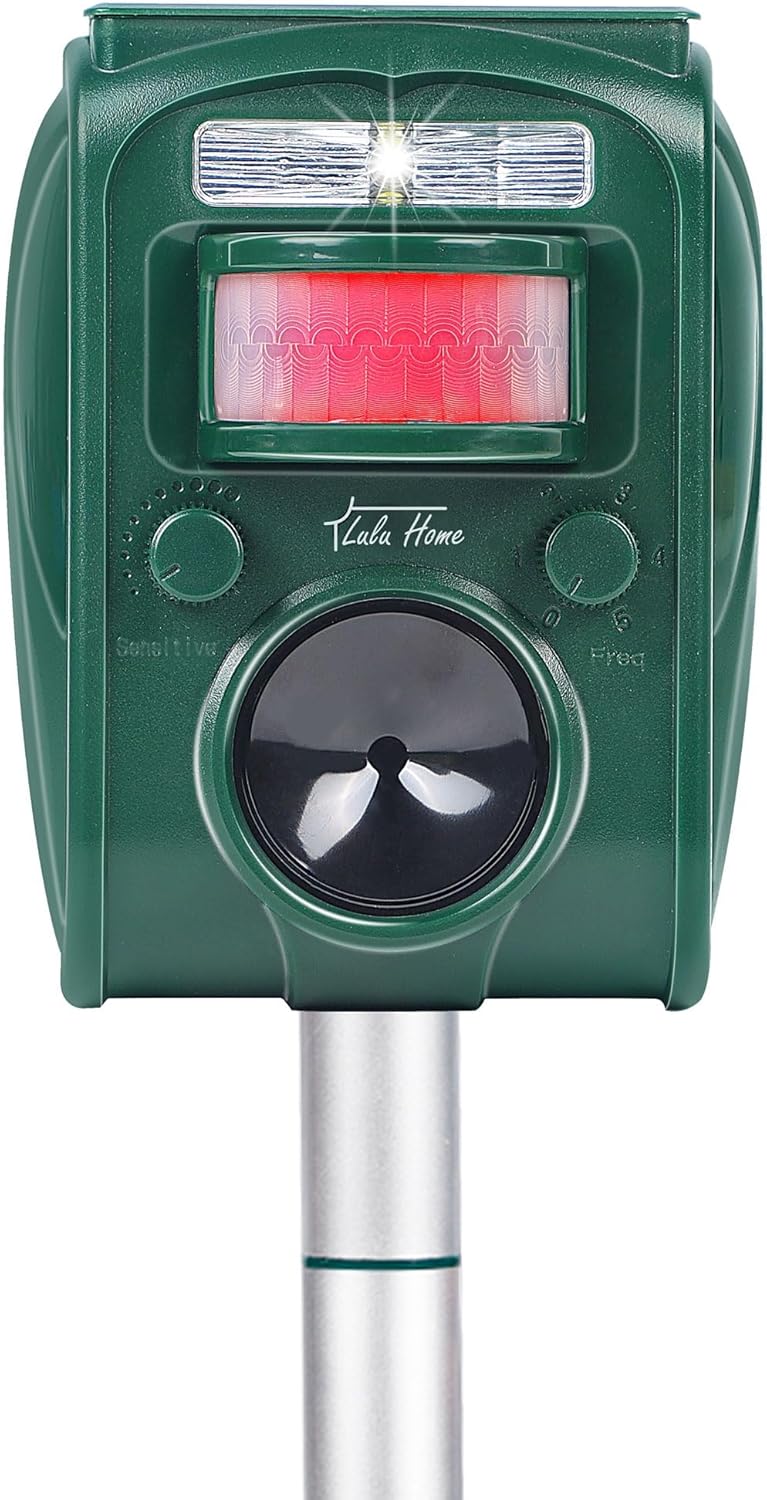
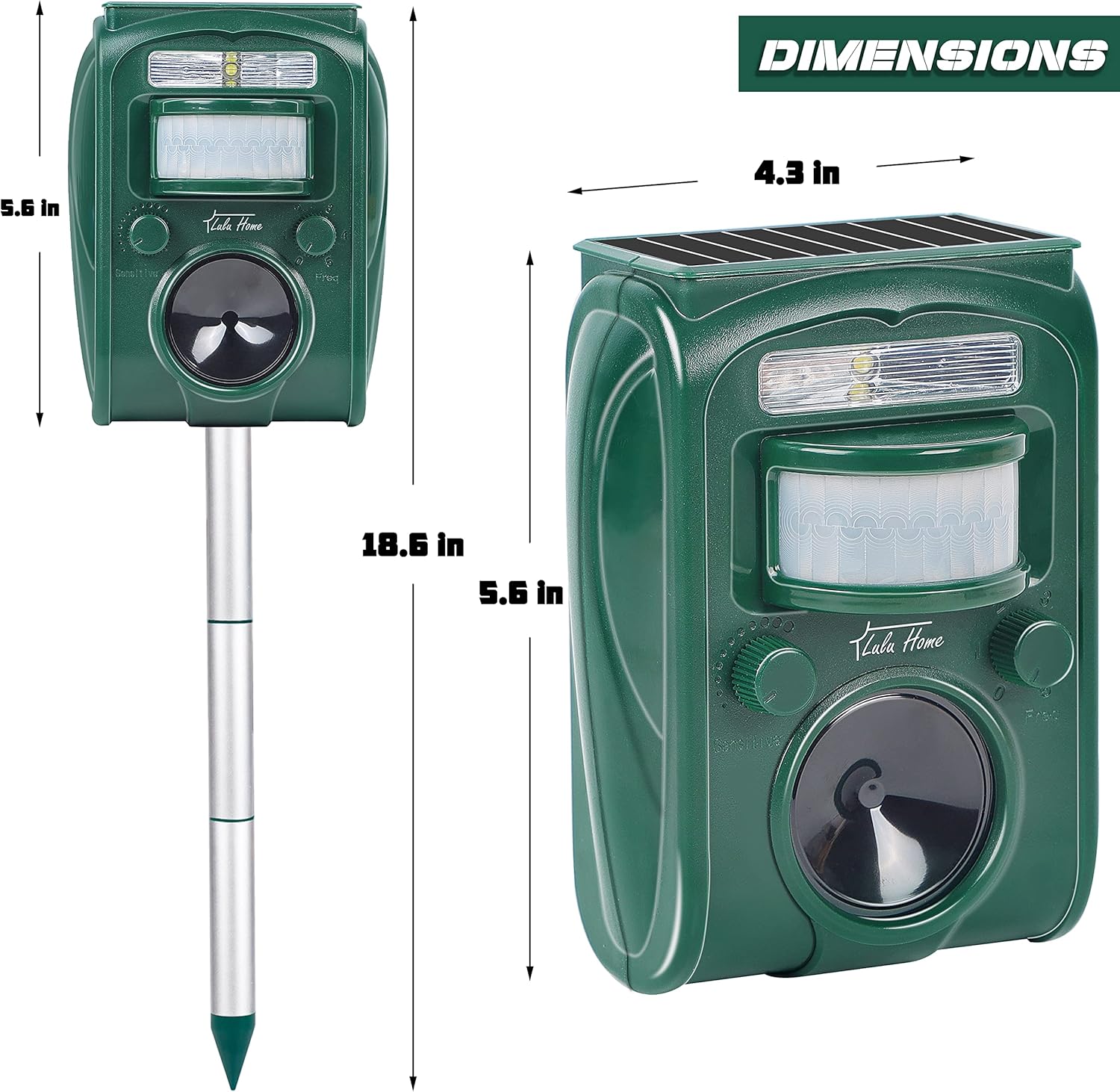
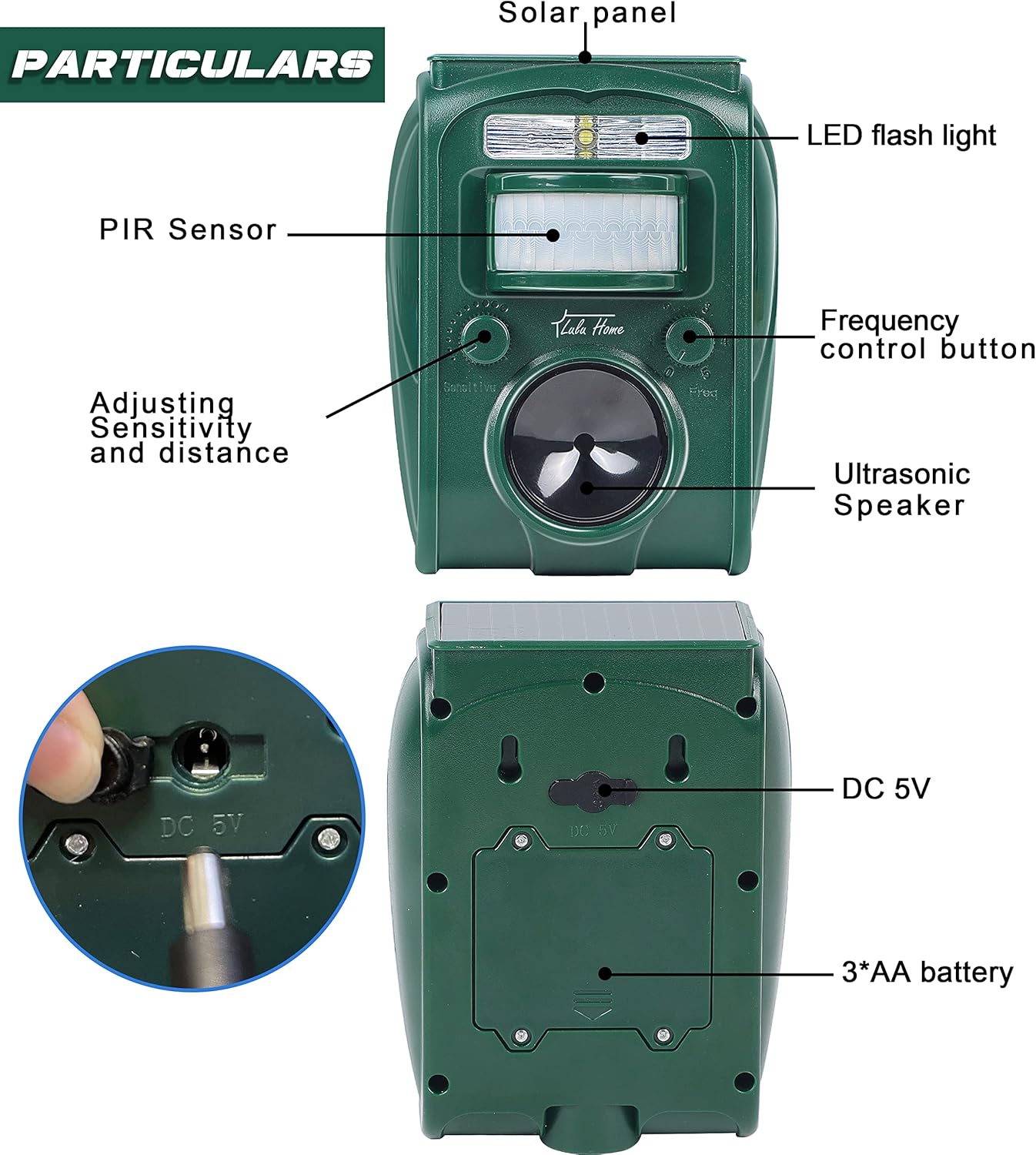
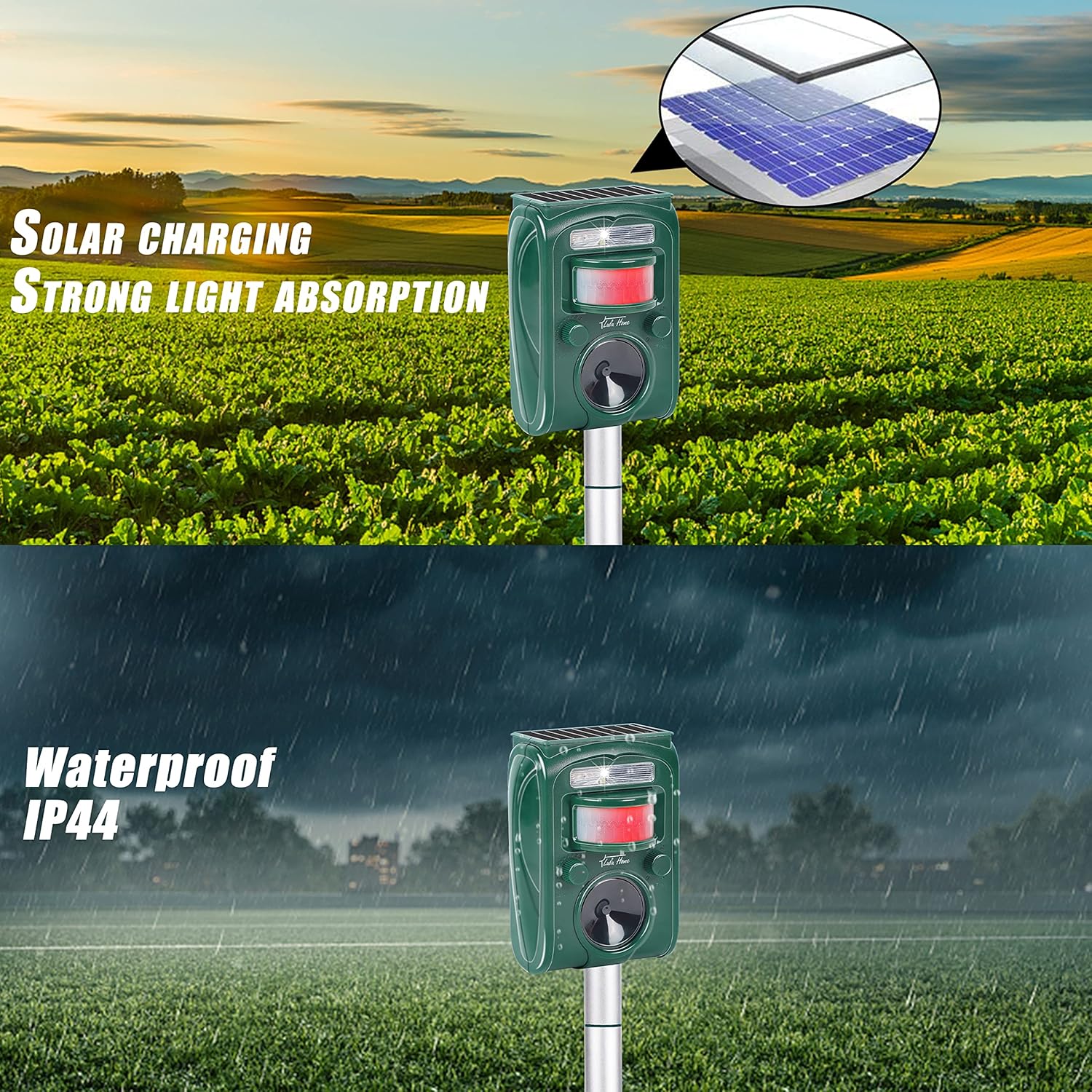
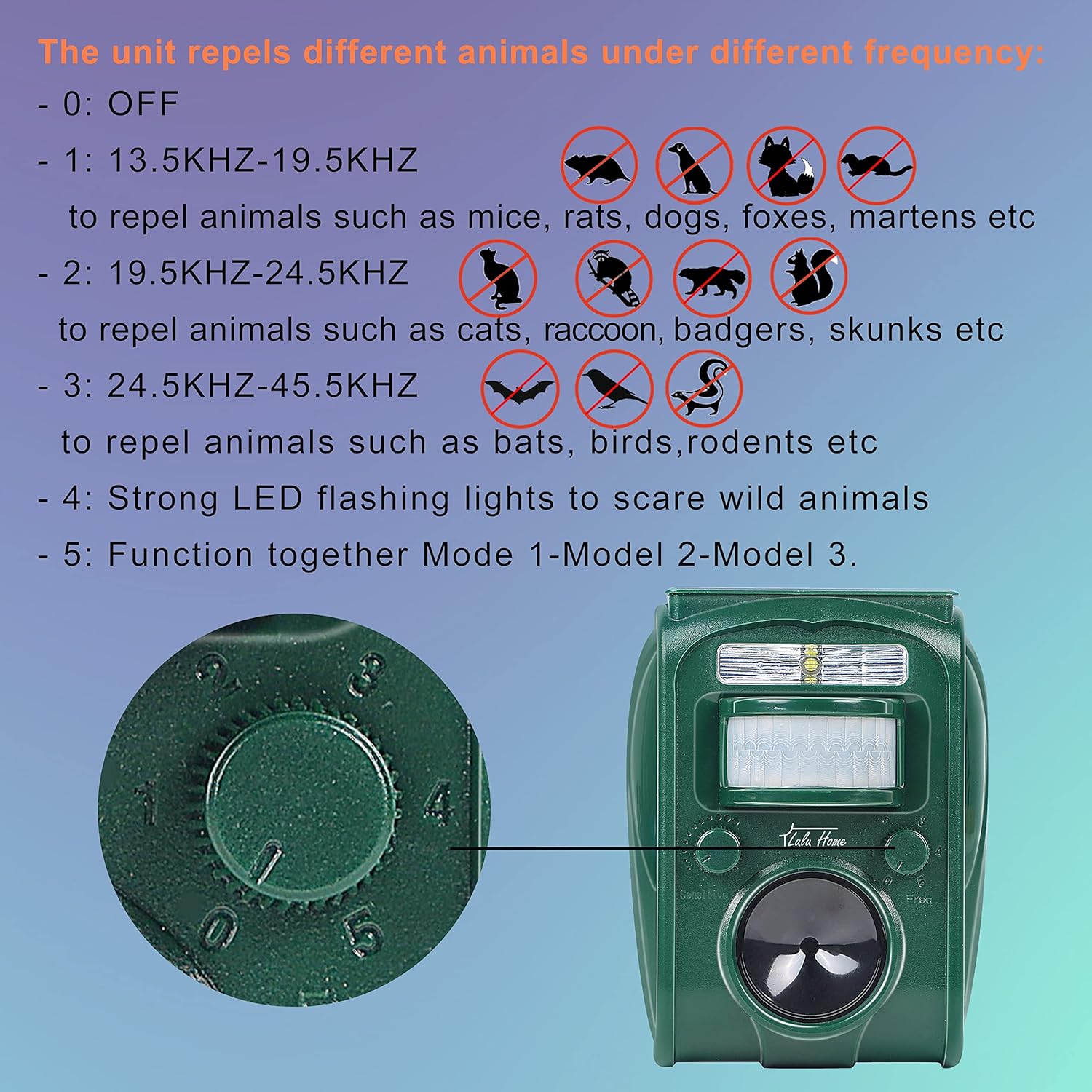
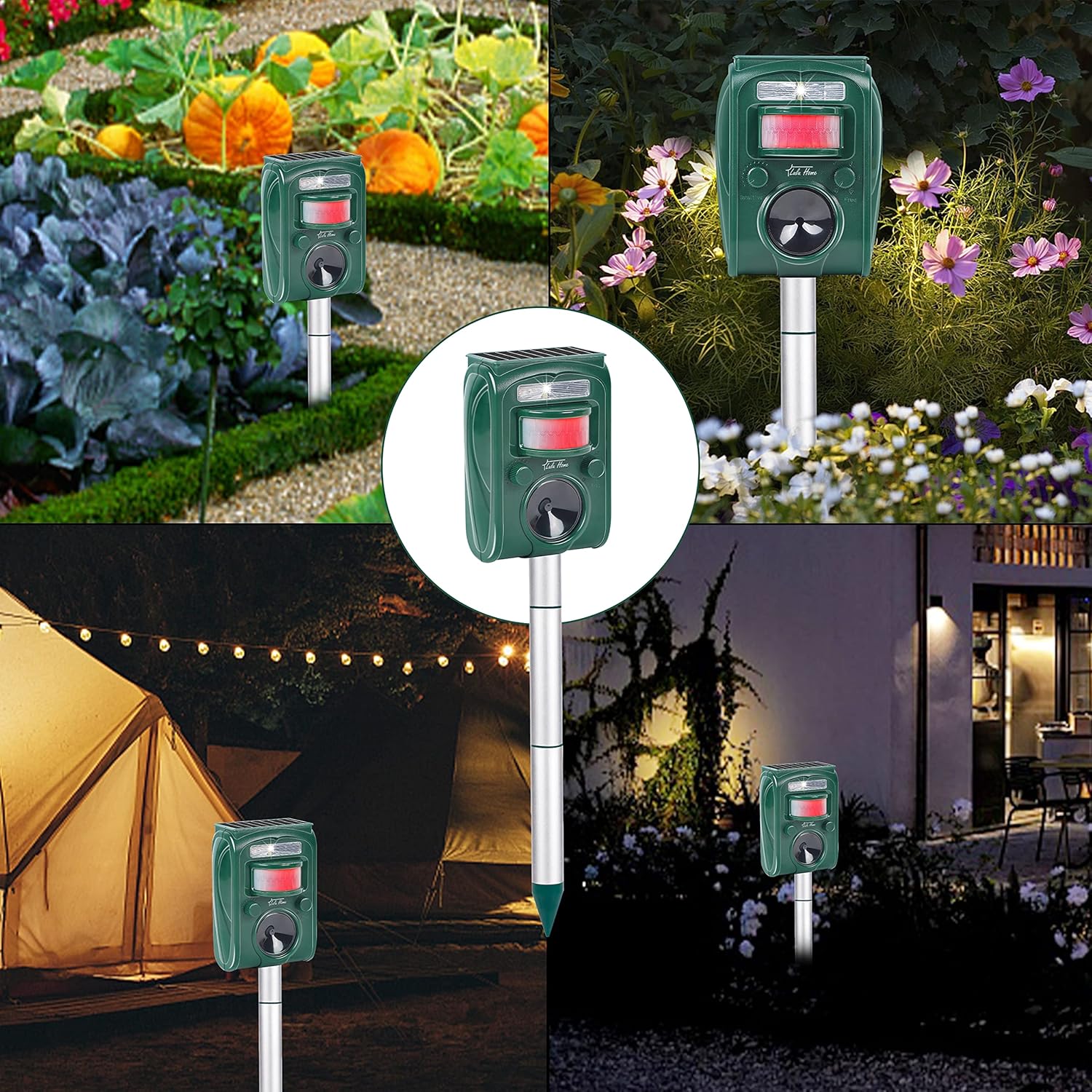
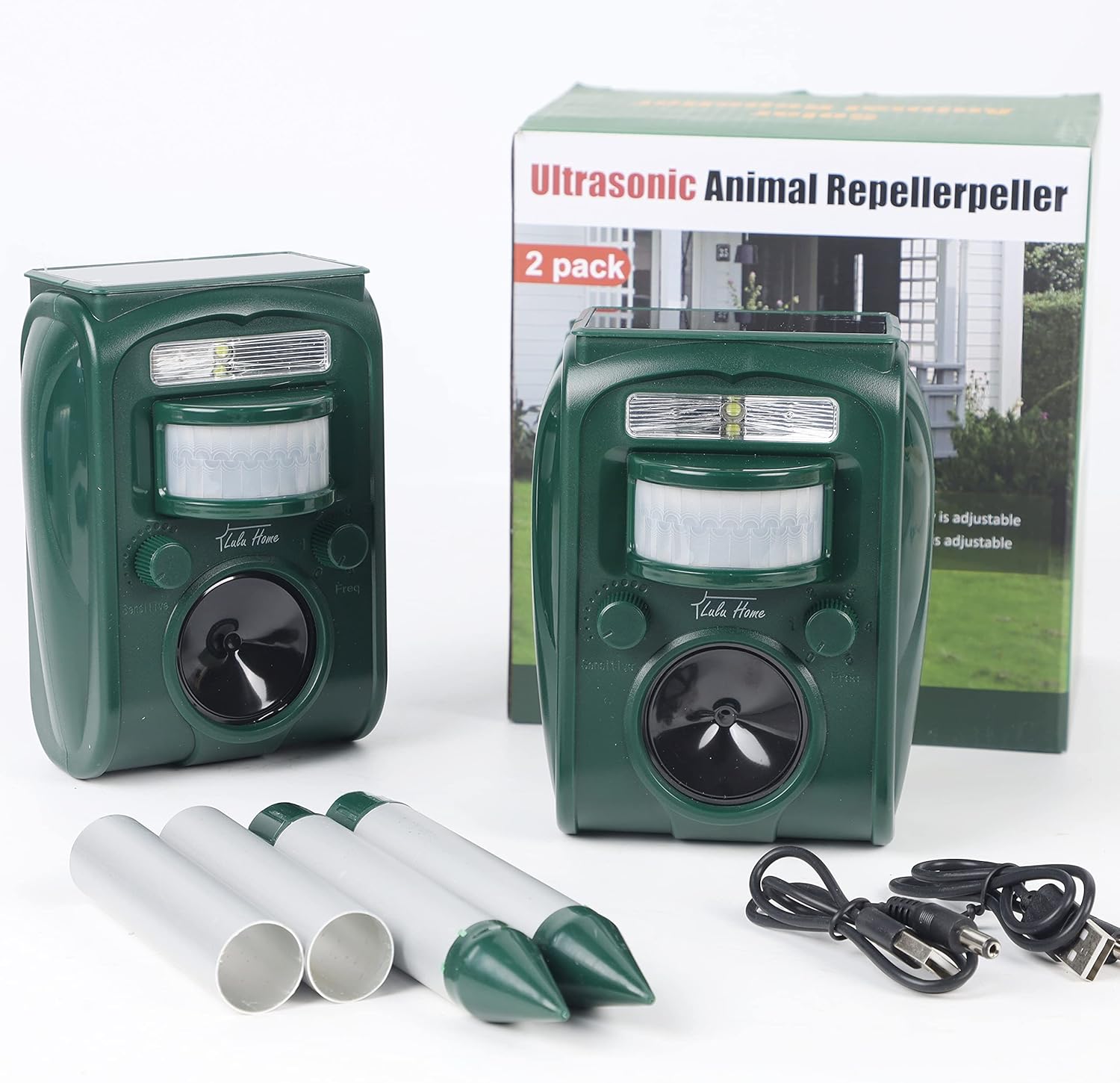
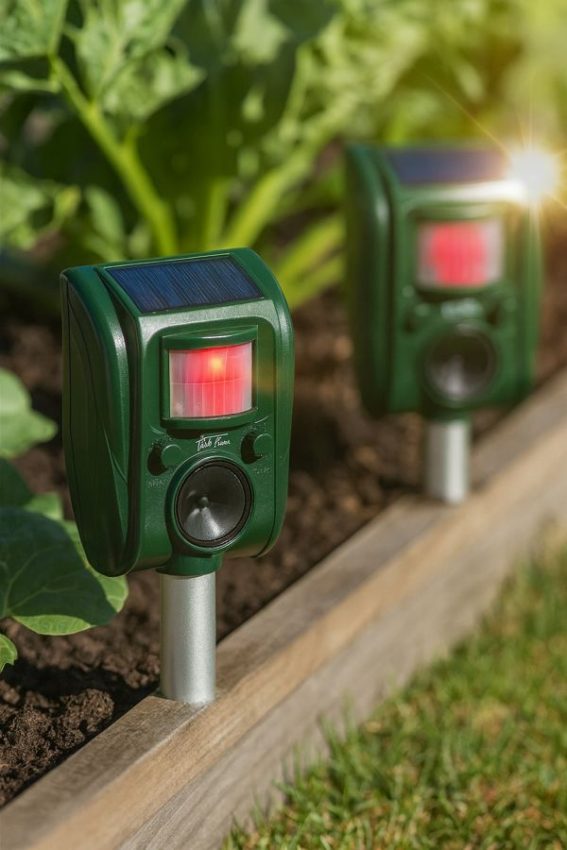
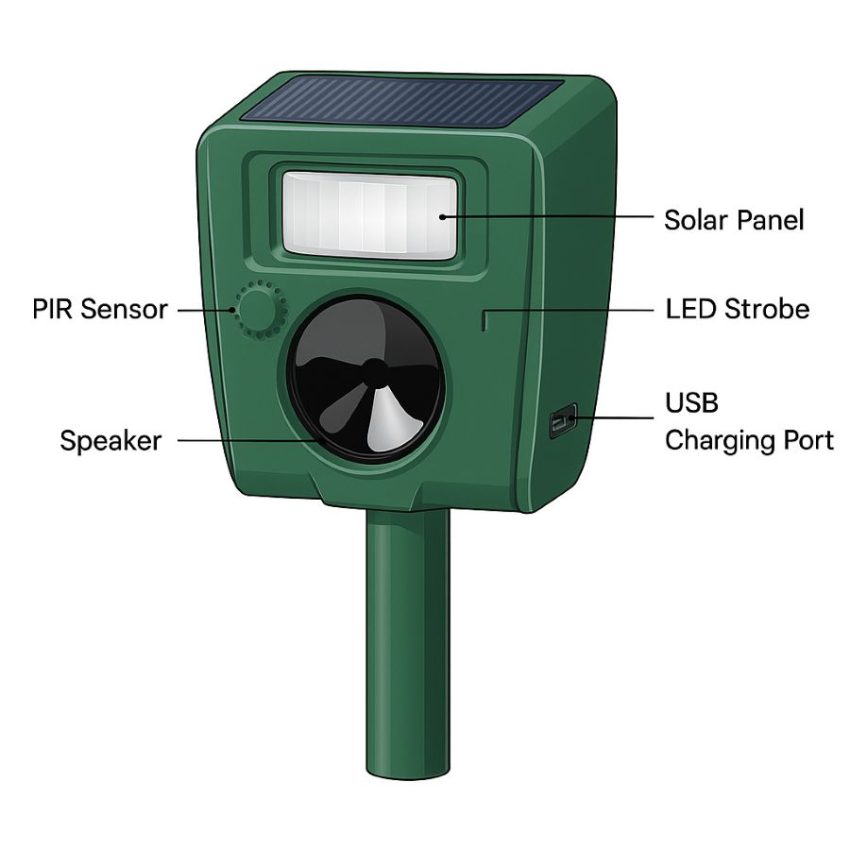
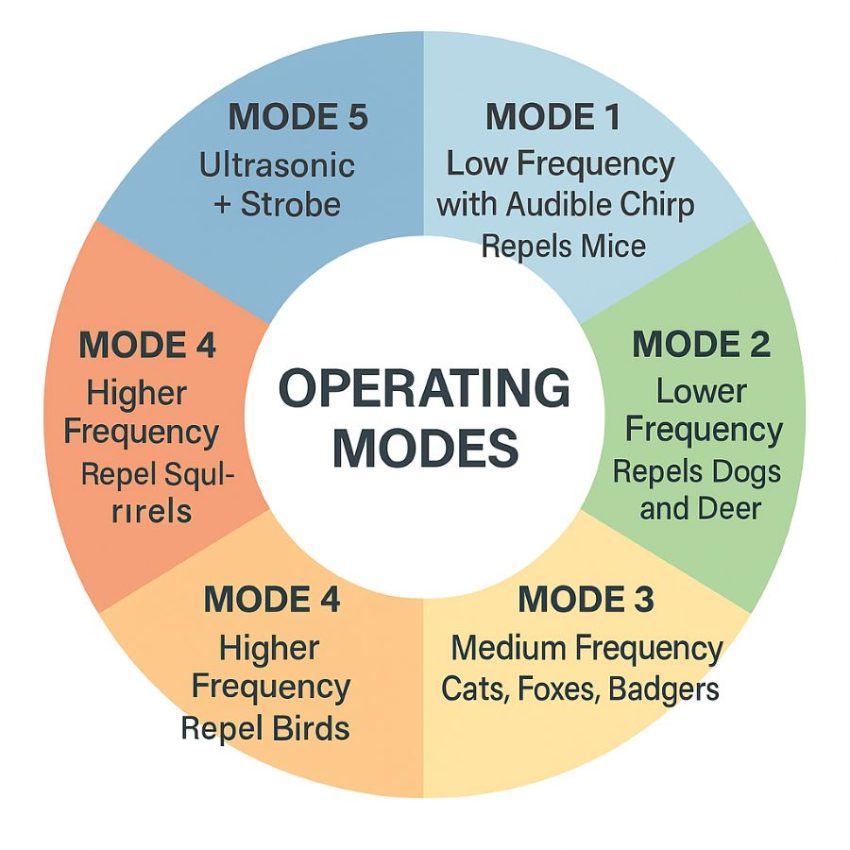
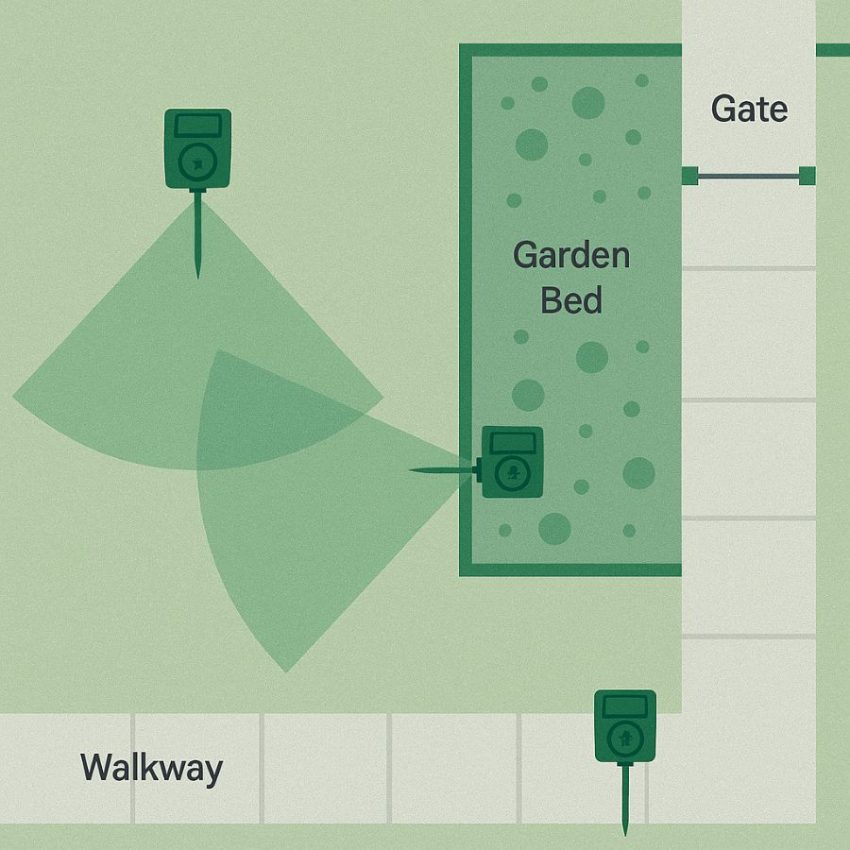
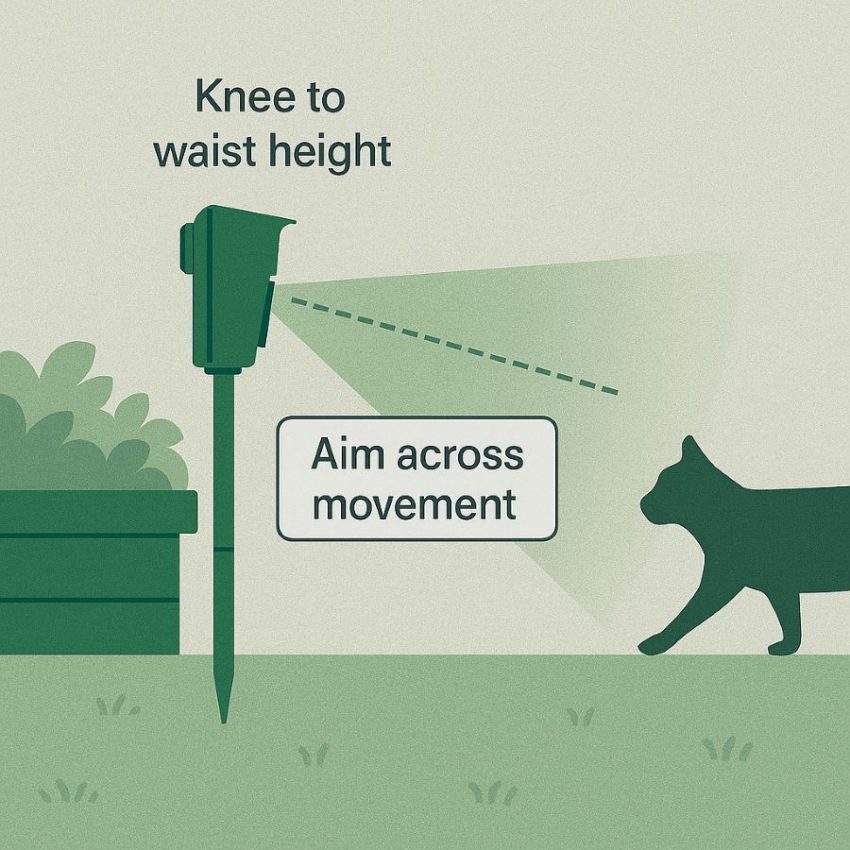
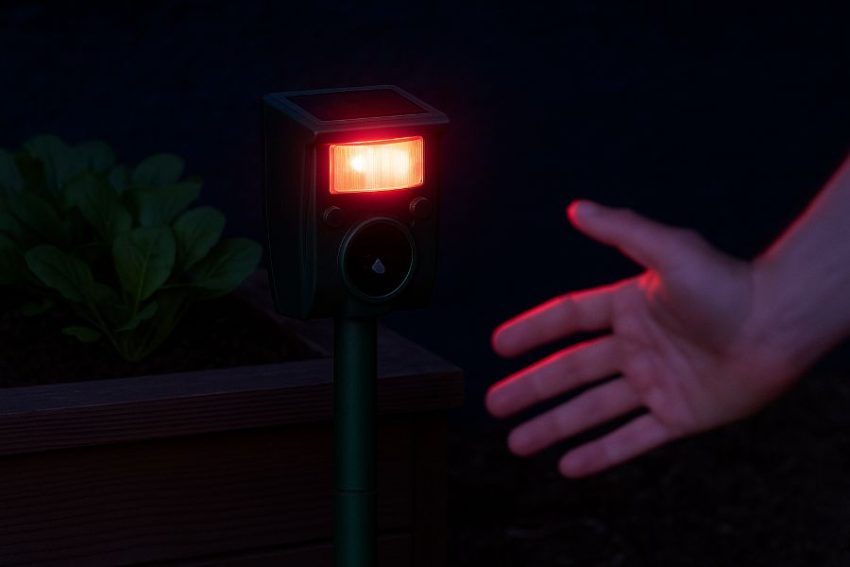
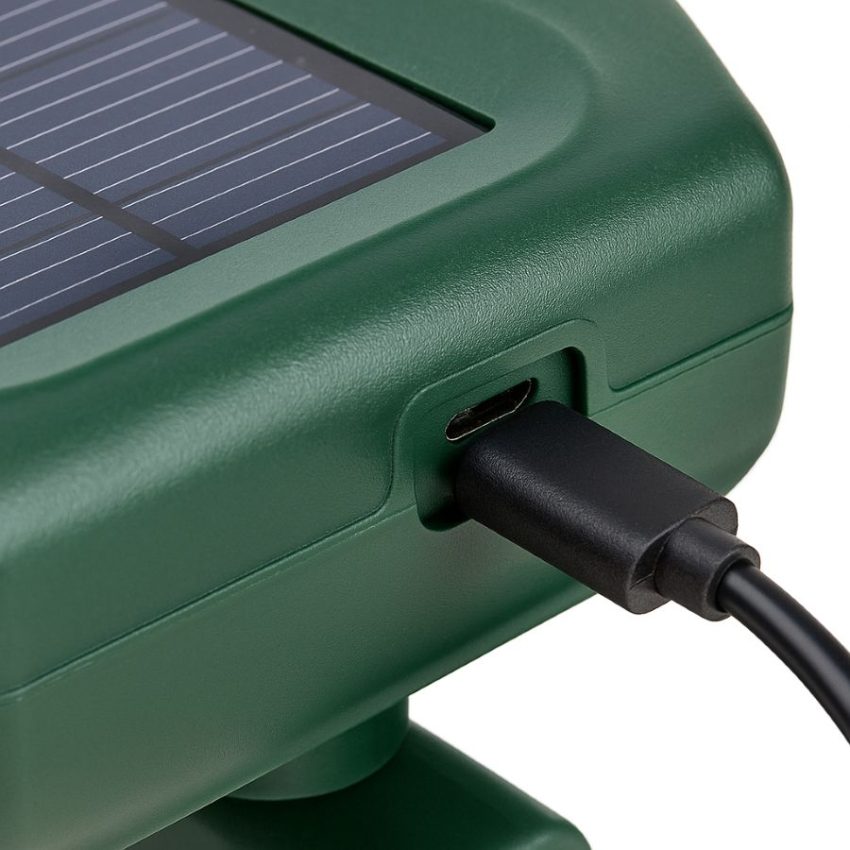

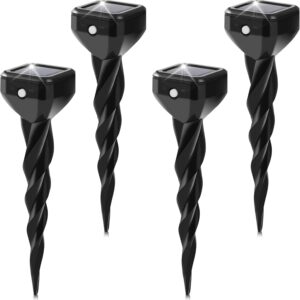
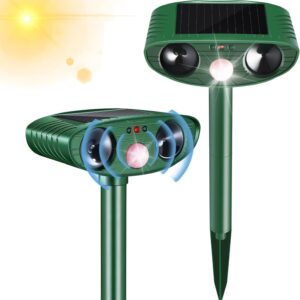

Reviews
There are no reviews yet.